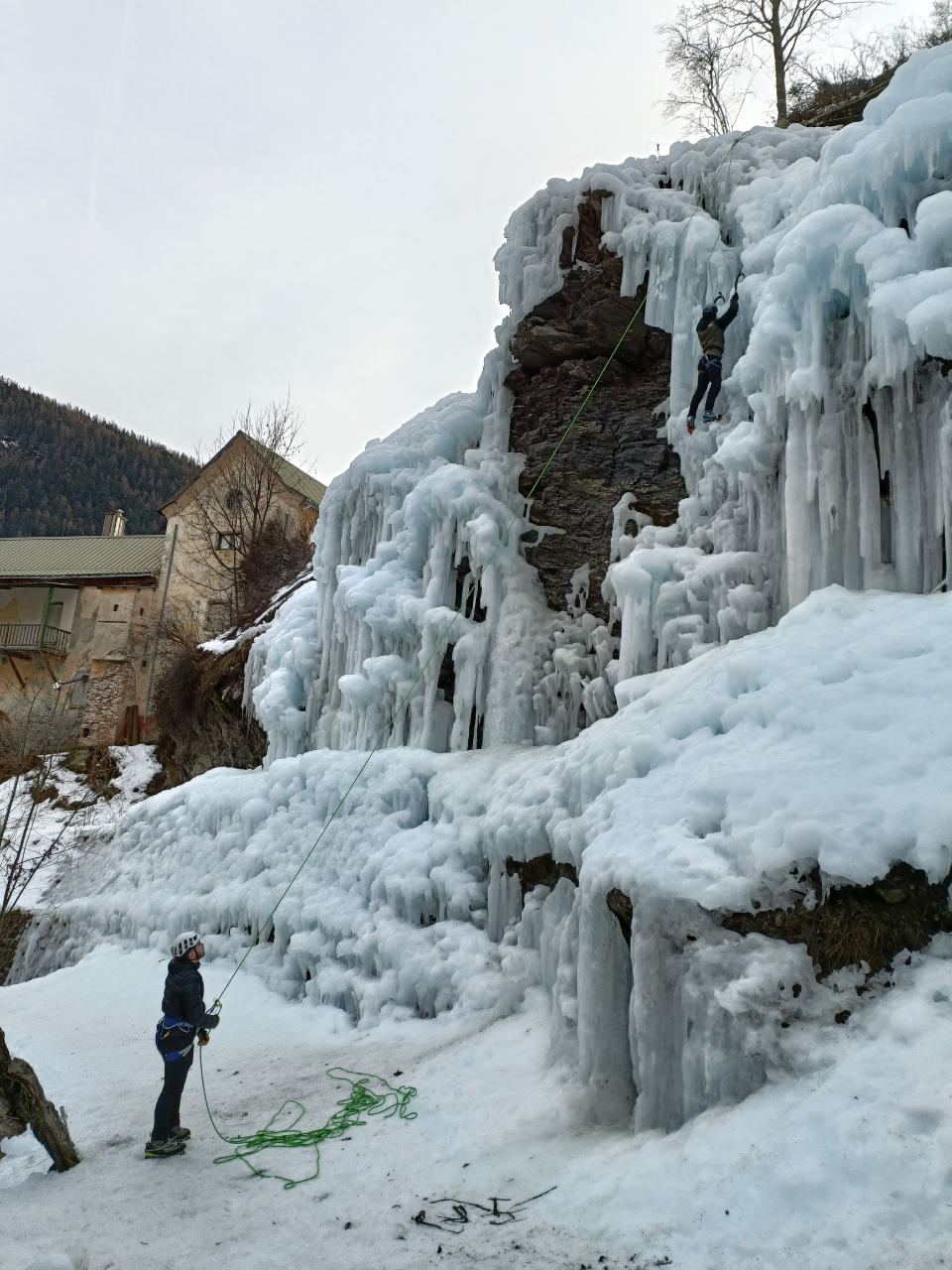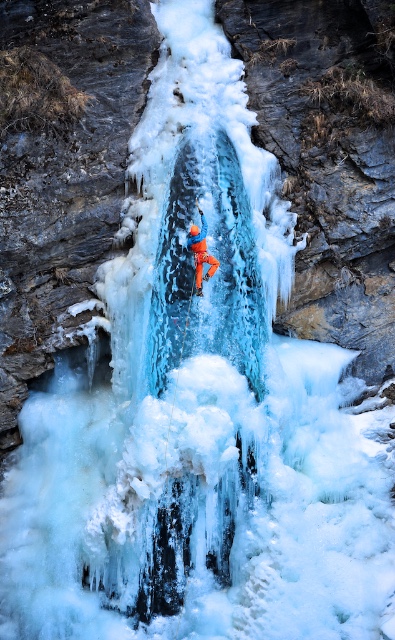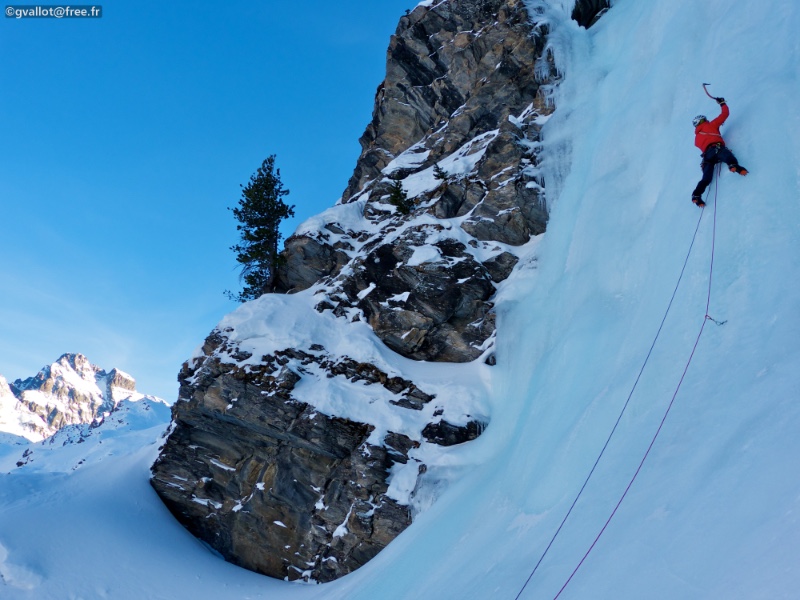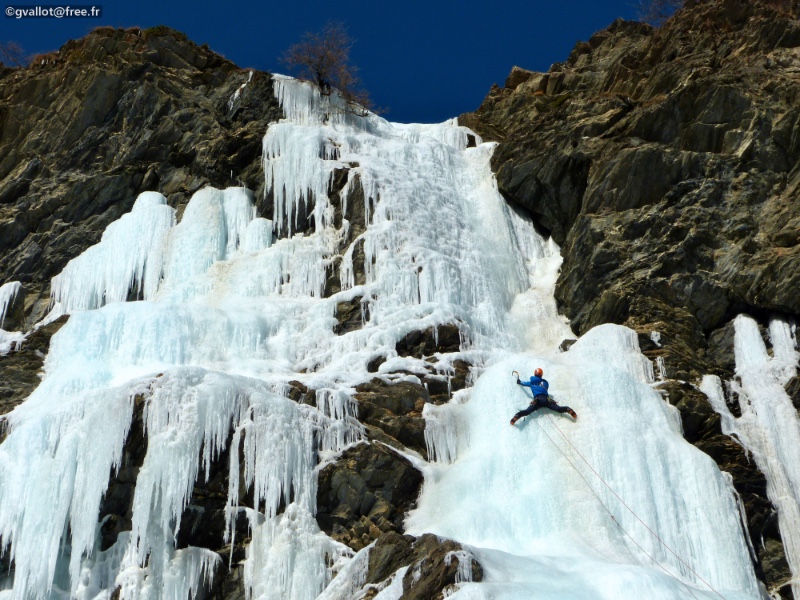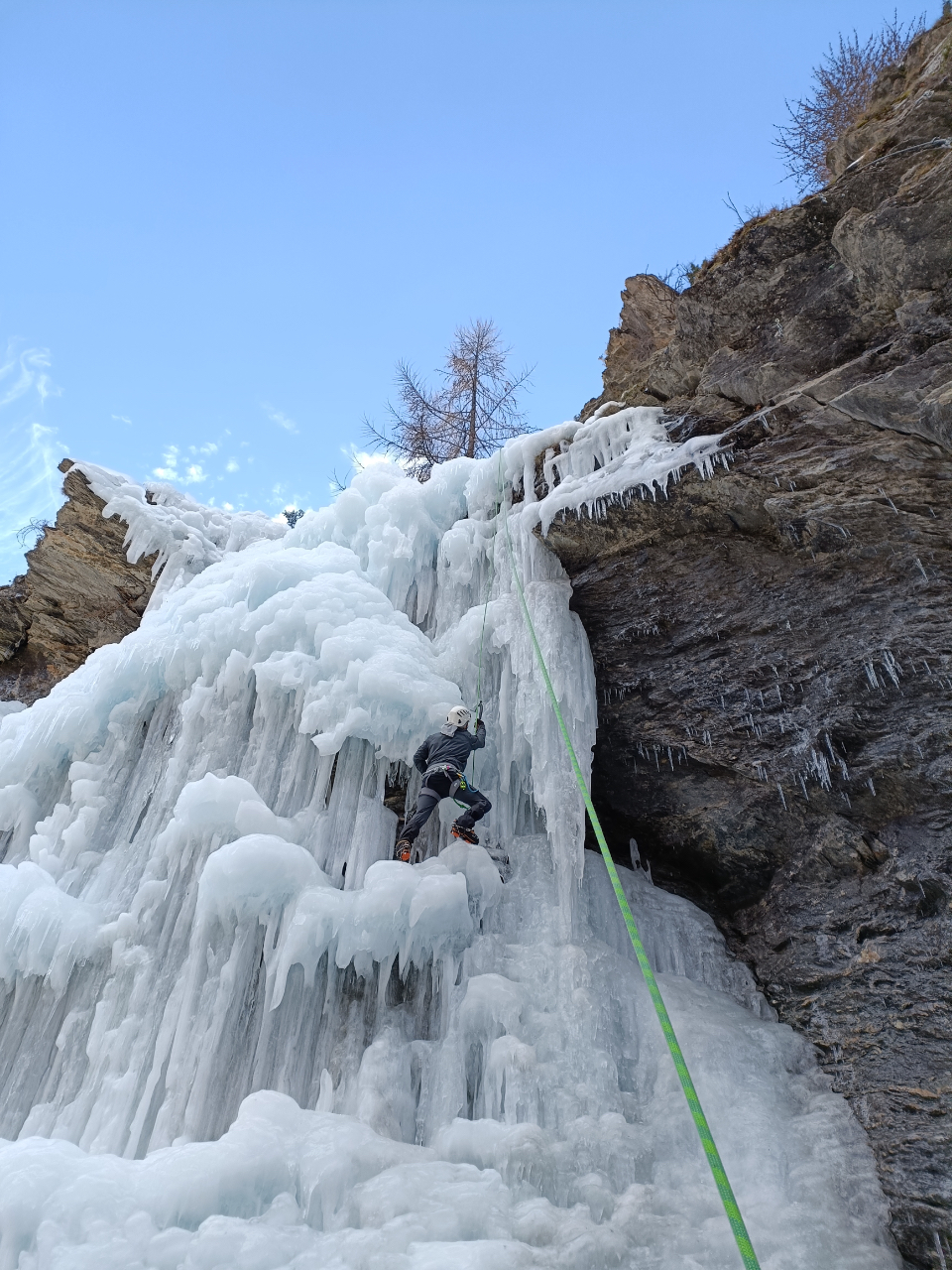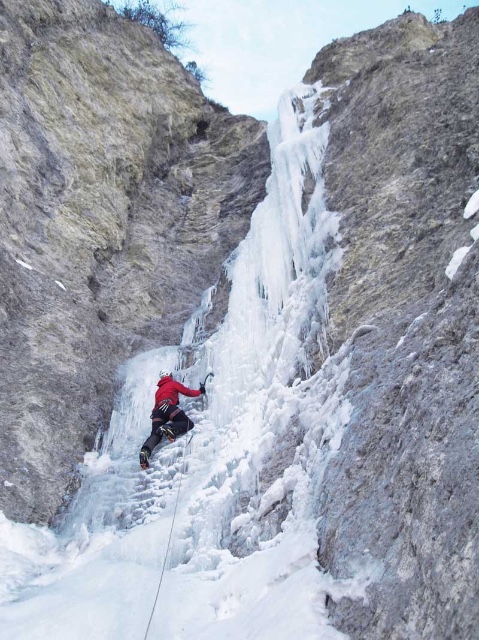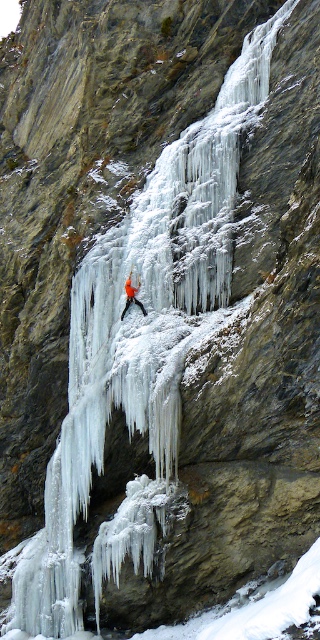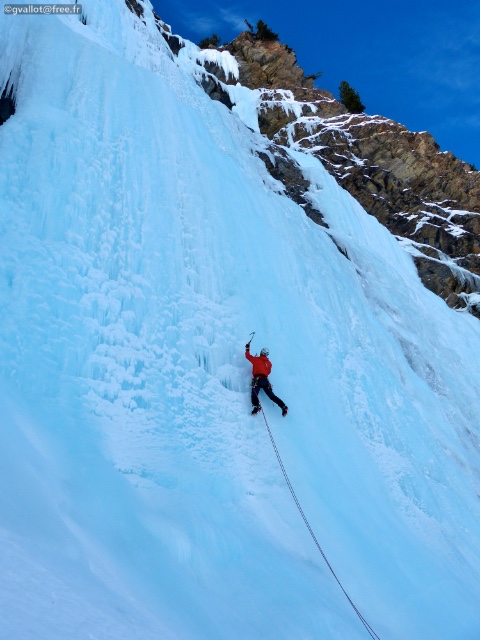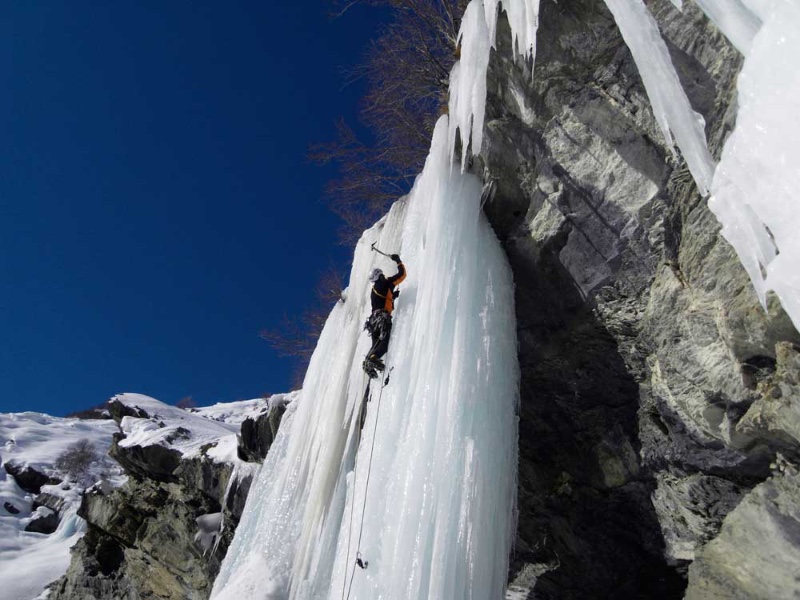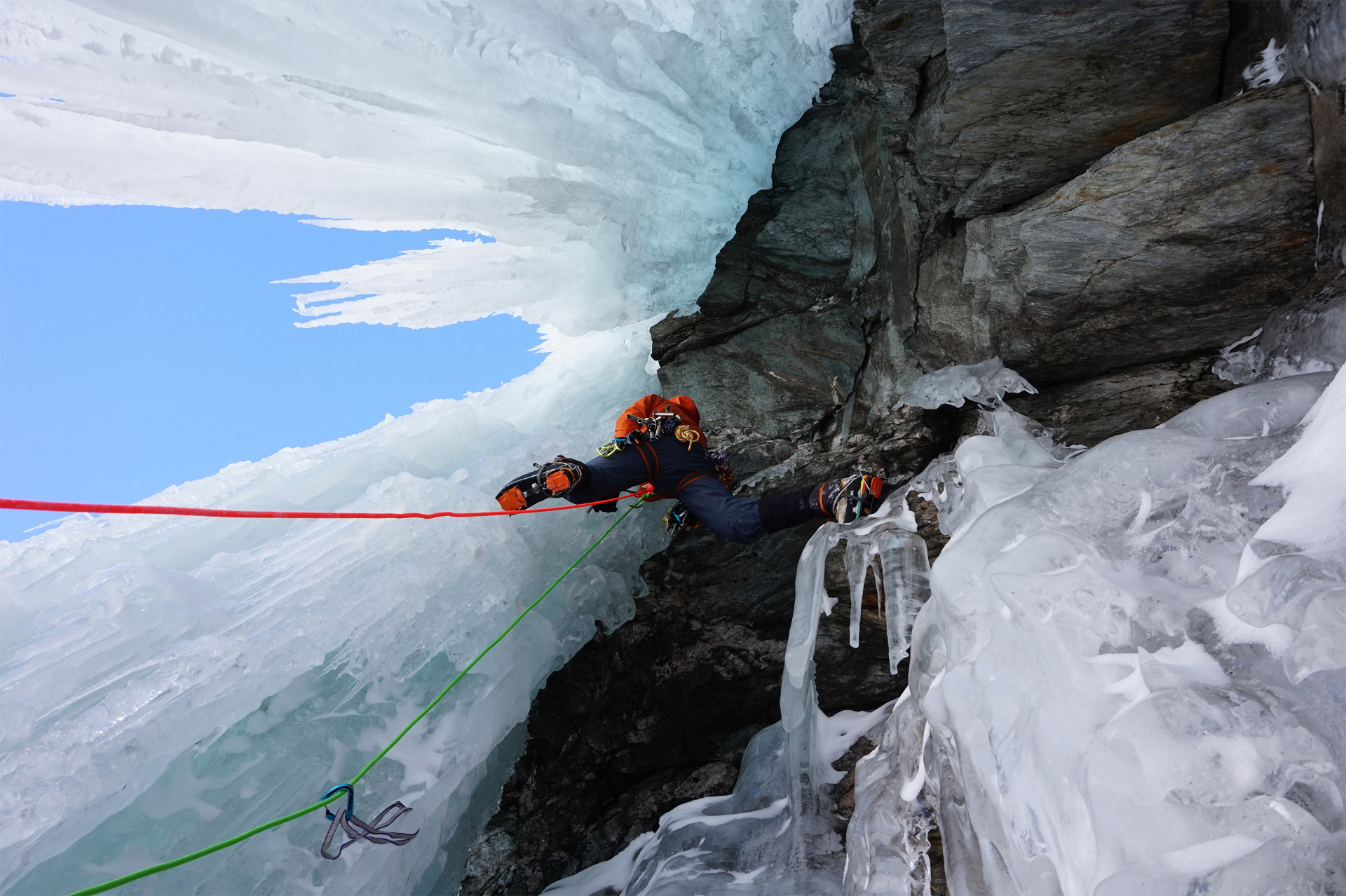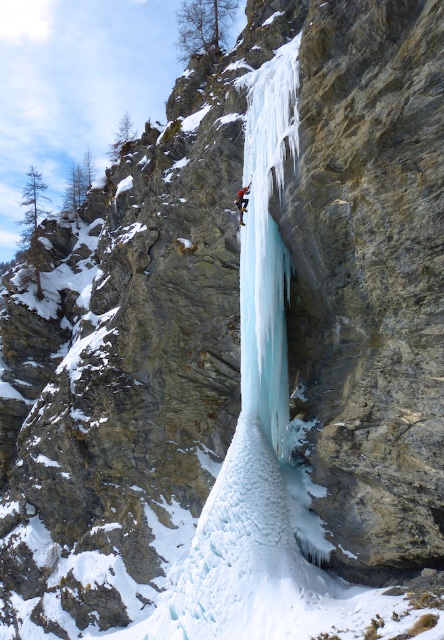Ice climbing is often misunderstood.
People imagine clinging to an ice axe for dear life, their hands frozen stiff, whereas the reality of ice climbing is much different and a whole lot of fun with just a little experience (even though you will never run the risk of getting a sunburn!).
The winter atmosphere, the ice's amazing shapes and colors, combined with ice climbing's unique technique will make your vertical adventure an unforgettable experience.
We will guide, instruct, and show you how to safely have fun and take full advantage of this unique frozen medium.
The ice climbing season usually runs from December to the end of February.
